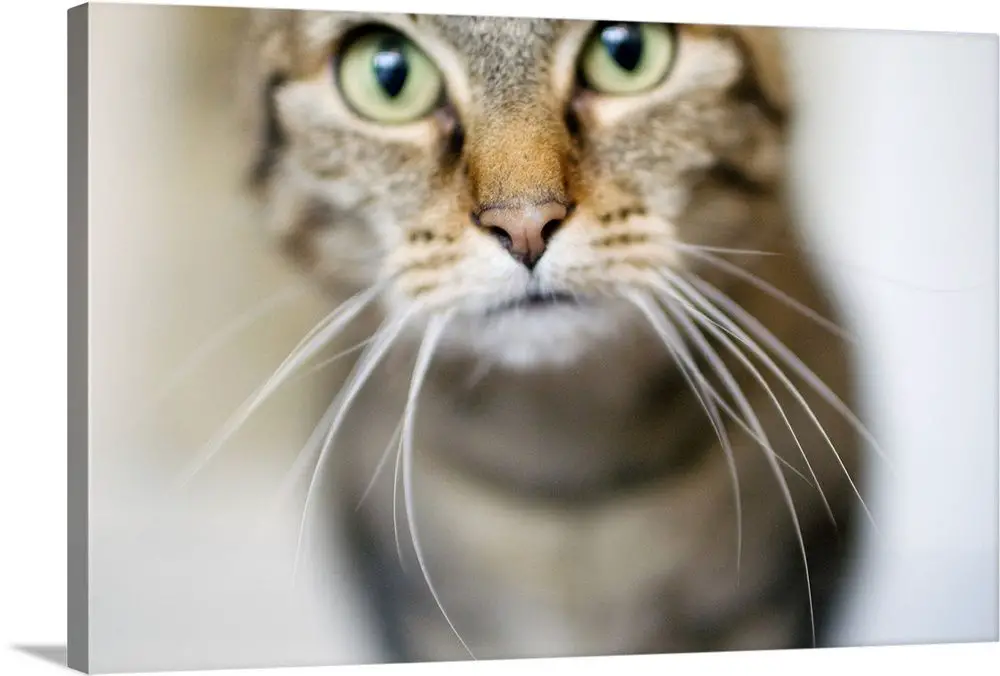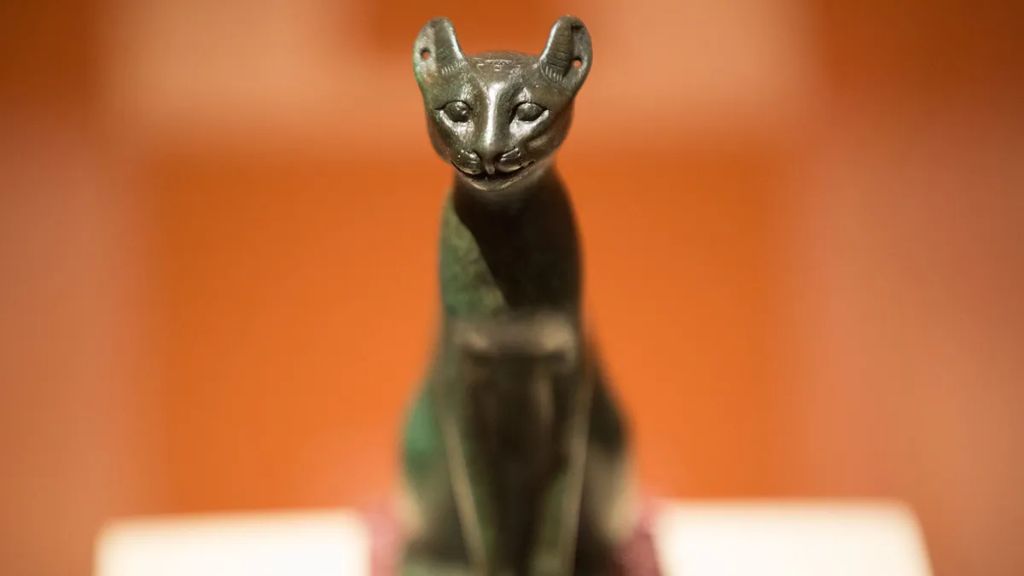Cat whiskers have long been associated with superstitions and folklore related to luck and fortune. In many cultures around the world, cat whiskers are considered to bring good luck and ward off evil. This connection between cat whiskers and luck likely stems from the mysterious nature of cats themselves, as well as the mythic powers often attributed to felines throughout history.
In particular, cat whiskers are thought by some to be imbued with magical or supernatural properties. They are treasured as tokens of good fortune and even believed to grant wishes if treated with respect. From lucky cat figurines with prominent whiskers to myths about whiskers granting nine lives, cat whiskers occupy a unique place in superstitious traditions.
This article will explore the folklore, mythology, and superstitious beliefs surrounding cat whiskers thought to bring good luck and fortune. It will examine where these traditions originated, how they spread, and why cat whiskers continue to be associated with luck even today.
Anatomy and Function of Cat Whiskers
Cat whiskers are not regular hairs but are actually specialized hairs called vibrissae (The Anatomy Of Cat Whiskers: What You Need To …). These tactile hairs are thicker and longer than the other hairs on a cat’s body. Whiskers are highly sensitive and are connected to nerves deep inside the cat’s face. Cats cannot move their whiskers voluntarily but the whisker pads, with their many nerve endings, enable cats to detect even the slightest vibrations in the air.

Whiskers are strategically located in places that help cats sense their surroundings and move about safely, like above their eyes, on their chin, legs, and near their ears (Why Do Cats Have Whiskers? – VCA Animal Hospitals). The two sets of whiskers on a cat’s face, called the mystacial whiskers, are actually precisely spaced in an evenly measured pattern to help cats perceive depth and distances. This allows cats to navigate tight spaces, avoid obstacles, and judge distances when jumping.
Cats Use Whiskers to Sense Their Environment
A cat’s whiskers, known as vibrissae, play an important role in their ability to sense their surroundings. The whiskers contain nerve endings that send sensory information to the brain, helping cats detect and measure objects around them.
Whiskers essentially act like “feelers”, allowing cats to judge the width of spaces to see if they can fit through. For example, if a cat’s whiskers touch the sides of an opening as it approaches, the brain receives signals that the space may be too narrow. This helps prevent the cat from getting stuck.
Additionally, whiskers detect air currents and vibrations, even subtle ones, enabling cats to sense the movement of potential prey. The extra sensory input from whiskers gives cats excellent night vision and hunting abilities.
Since whiskers are so critical for spatial perception and environmental awareness, it’s important not to cut or damage them. Trimming or removing whiskers impairs a cat’s natural navigation and predatory skills.
In summary, whiskers provide vital tactile feedback about a cat’s surroundings. They serve as a sort of “sixth sense” that aids cats in judging distances, detecting objects, and enhancing their remarkable hunting instincts.
Whiskers in Mythology and Folklore

According to ancient mythology and folklore, cat whiskers have long been revered as symbols of good luck and fortune. In particular, ancient Egyptians held cats and their whiskers in high esteem. Egyptians viewed cats as sacred creatures, and worshipped cat-headed deities like Bastet. They believed that cat whiskers offered protection against evil spirits and curses.
The ancient Egyptians also associated cat whiskers with prosperity. They would often keep shed whiskers in the home or wear them as jewelry, believing that the whiskers would attract good luck and wealth. There are records of Egyptian families competing for whiskers that cats shed naturally. They considered found cat whiskers extremely lucky.
Some Egyptian myths claim that cats protected the vulnerable sun god Ra while he travelled through the underworld each night. As a reward for their service, Ra gave cats special gifts like their whiskers to help keep them safe. Overall, ancient Egyptian mythology clearly demonstrates the high status cats and their whiskers held in their culture.
Whiskers as Good Luck Charms
In some cultures, carrying a cat’s whisker is considered to bring good luck. This superstition has ancient origins and connects to beliefs about the supernatural powers of cats. For example, in Japan, the Maneki Neko figurine with its raised paw is a symbol of good fortune. Treasuring whiskers as lucky charms may have emerged from myths regarding a cat’s ability to ward off evil spirits, provide protection, and bless an individual or home.
Some people believe that finding a fallen whisker signals impending luck or can influence the outcome of important events like exams and job interviews. Carrying the whisker of a black cat in your pocket is thought to be especially fortuitous in British folklore. Sailors’ wives sometimes kept their cats’ whiskers in a locket or jar while their husbands were away to ensure safe voyages. In Russia, young brides traditionally carried whiskers for a happy marriage.
While these myths attribute magical qualities to cat whiskers, their lucky symbolism seems to arise most strongly from the animals’ own reputations as clever, self-reliant creatures who frequently land on their feet. Those hoping to channel the grace and fortune of felines have treasured whiskers as tangible connections to a cat’s mysterious essence.
Citation: https://cats.com/are-cat-whiskers-good-luck
Whiskers in Superstitions

Cat whiskers have long been associated with good luck, money, and protection in folklore and superstition. In many cultures, finding a shed whisker is considered a sign of impending good fortune. This stems from the ancient belief that cats have mystical powers and their whiskers hold protective energy.
There is a Celtic superstition that carrying a cat’s whisker in your pocket will bring money your way. This notion dates back centuries when it was thought that the cat’s magical essence could attract wealth and prosperity. Some believed that the whisker had to be freely given or found, not plucked from the cat, in order to gain its lucky powers.
An old myth suggests that a cat will blow its whiskers to a friendly house to bring it fortune. So finding a whisker on the floor was seen as a blessing from the cat. In another folk tale, the Devil is afraid of cats and their whiskers can ward off evil spirits and bad energy. Keeping a cat whisker over your door would protect your home.
While these superstitions are not based in scientific fact, they reveal the long-held mystical associations between cats and luck. For cat lovers who find a feline’s whisker, it can still feel like a little gift from the universe.
(Source: https://cats.com/are-cat-whiskers-good-luck)
Lucky Cat Figurines
One of the most recognizable good luck charms across Asia is the Maneki-neko or “beckoning cat” figurine. These figurines are statues of a cat with one paw raised in a welcoming gesture. The figurines originated in Japan, where they are known as Maneki-neko, which translates literally to “beckoning cat”. According to the National Geographic, the figurines date back to the late Edo period in Japan (1603-1867) [1].
The most iconic Maneki-neko figurine depicts a calico Japanese bobtail cat with its right paw raised. This type of Maneki-neko is believed to invite good fortune and customers into businesses [2]. The left paw raised Maneki-neko is said to attract money and wealth [1]. These figurines are commonly placed at entrances to businesses, restaurants, and other establishments to invite prosperity.
There are a few popular legends about the origins of Maneki-neko in Japan. One legend claims that a wealthy feudal lord was taking shelter under a tree during a storm when a cat from a nearby temple beckoned him inside. Moments later, lightning struck the tree where the lord had been standing. The grateful lord rewarded the temple with prosperity, thanks to the beckoning cat [3].
[1] https://www.nationalgeographic.com/history/article/the-fascinating-history-behind-the-popular-waving-lucky-cat
[2] https://en.wikipedia.org/wiki/Maneki-neko
[3] https://medium.com/re-form/getting-lucky-a6316b02a69a
Ethical Considerations
Removing or trimming whiskers from cats is generally discouraged by veterinarians and animal behavior experts for several reasons. First, whiskers are important sensory organs for cats that help them navigate and judge spaces. Whiskers contain nerves that relay tactile information to the brain, even detecting slight changes in air currents (https://spotpetins.com/blog/cat-tips/cats-whiskers-clipped). Trimming whiskers essentially robs cats of their natural spatial awareness and sensory capabilities. Cats rely on their whiskers to avoid eye injury, detect objects in the dark, climb and jump, and pick up food. Removing whiskers forces cats to rely more heavily on vision, which can be disorienting (https://www.quora.com/My-cats-whiskers-are-growing-too-long-Is-it-ok-to-give-him-a-trim).
Second, plucking or cutting whiskers causes pain and distress in cats. The follicles where whiskers grow from are surrounded by blood vessels and nerves. Forcibly removing whiskers traumatizes cats both physically and mentally. Additionally, whiskers tend not to regrow properly once cut, which can lead to permanent sensory impairment.
Therefore, experts strongly advise against plucking, cutting or trimming your cat’s whiskers. Whiskers naturally wear down and shed on their own. Unless medically necessary, whiskers should be left intact so cats can perceive the world fully. Regular grooming removes loose whiskers gently without harming cats or their sensory abilities.
Whiskers in Literature and Media
Cats’ whiskers have made several appearances in notable works of literature and media. In The Cat’s Whiskers children’s book, a cat’s whiskers become stars in the night sky. The idiom “the cat’s whiskers” is defined in Merriam-Webster as meaning someone or something that is excellent or appealing. The novel Cat’s Whisker by Robert Steven Goldstein features whiskers in the title.
In animation, films, and television, cats’ prominent whiskers are often depicted and sometimes used for comedic effect. For example, the character Lucifer in Disney’s Cinderella has exaggerated, expressive whiskers. Whiskers also play a role in cat characters from anime including Jiji in Kiki’s Delivery Service and Luna in Sailor Moon.
Artists throughout history have paid careful attention to capturing the details of cats’ whiskers in paintings, drawings, and sculptures of felines. Highlighting this distinctive facial feature helps convey cats’ alertness and sensory abilities.
Overall, cat whiskers are an iconic part of feline imagery and a recurring theme in cultural representations of cats across mediums.
Conclusion
Cats’ whiskers are an essential aspect of their anatomy, serving as sensory organs that aid in navigation, hunting, and awareness of their surroundings. However, these tactile hairs have also long been associated with mythology, folklore, superstitions, and good luck charms across many cultures.

As we’ve explored, cat whiskers provide cats with spatial awareness and environmental feedback, allowing them to judge distances, detect movements, and sense the terrain around them even in the dark. At the same time, ancient Egyptians revered cats and believed their whiskers conveyed mystical powers. In many folk tales, stealing or cutting a cat’s whiskers is considered bad luck.
Today, ceramic and plastic lucky cat figurines with prominent whiskers remain popular worldwide as supposed harbingers of good fortune. However, real cat whiskers should never be cut or removed, as this causes pain and sensory impairment for cats. Overall, while the idea of whiskers as good luck charms stems from legend, these specialized hairs are perhaps better appreciated for the vital role they serve in cats’ daily lives.
